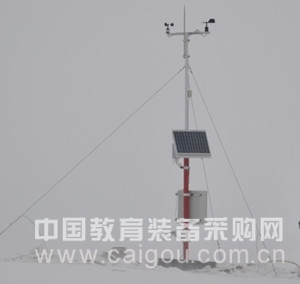Kyushu Space provides a detailed guide on how to properly maintain an automatic weather station.
1. Regular Inspection of Equipment
According to the Surface Meteorological Observations Code, it is essential to conduct patrols of both the observation site and the automatic weather station equipment in the duty room, ideally after sunrise and before sunset. During these inspections, check if all sensors are functioning correctly, ensure that the rain gauge funnel is not clogged, confirm that the ground temperature sensor is properly buried, and verify that the wind direction and speed sensors are operating smoothly. Additionally, review the real-time data displayed on the computer 10 minutes before each hour to detect any anomalies early. Timely checks help identify issues quickly and ensure accurate and reliable data collection.
2. Time Synchronization
It's important to regularly check the time displayed on the data collector. Avoid adjusting the time within 1–2 minutes before or after the scheduled hour, as this is when critical data is being collected, processed, and transmitted. Any incorrect time setting can lead to incomplete data files or failed uploads. Also, avoid making adjustments during heavy rainfall, as this may prevent the minute data file from capturing accurate precipitation records, which could affect the annual report’s accuracy.
3. Sensor Maintenance
(1) Ground Temperature Sensor: The ground temperature sensor should be placed flat on the surface layer, with half exposed to the air and half buried in the soil. Keep it clean by wiping away rain and debris. Shallow and deep ground temperature sensors must be checked regularly for proper installation and soil stability.
(2) Rain Sensor: Inspect the funnel for blockages during each patrol. Ensure that the drainage system is clear during precipitation. Clean the bucket and filter regularly and check their installation for integrity.
(3) Temperature and Humidity Sensor: Keep the louvers clean and ensure the sensor height is correct. If the protective cover becomes too dusty, affecting airflow, replace the filter and net cover promptly.
(4) Air Pressure Sensor: Check the air pressure vents frequently to ensure no foreign objects are blocking the airflow.
(5) Wind Direction and Speed Sensor: Monitor the sensor continuously and check that the wind vane is vertical, aligned correctly, and that the cables are securely fastened.
4. Power System Maintenance
Many operators overlook power system maintenance, but it is crucial for continuous operation. Since the automatic weather station collects and transmits data every minute, a stable and uninterrupted power supply is necessary. Most stations come with a backup UPS. Regularly check for loose connections and ensure the UPS is functioning properly. In areas with frequent power outages, consider installing an emergency generator.
5. Data File Backup
Key files to back up include data files, parameter library files, and system files. For the current 0SSM0-2004 daily data files, the B file in the BaseDate directory, the Z file in the AwsSource directory, and per-minute data for each element should all be backed up. It is recommended to store backups both locally and through the local network, using other computers for offsite storage to ensure data safety.


D-amino acids were discovered by scientists in humans in the 1970s, but were not extensively studied until the late 1980s. Although the unnatural D-type amino acids are not the basic structural units that make up proteins, D-amino acids are found in many plants, microorganisms and higher plants.
D-amino acids,amino acids,Plant extracts,6893-26-1,D-Glutamic acid ,H-D-Glu-OH
Mianyang Shengshi Health Technology Co.,Ltd , https://www.shengshiaminoacid.com